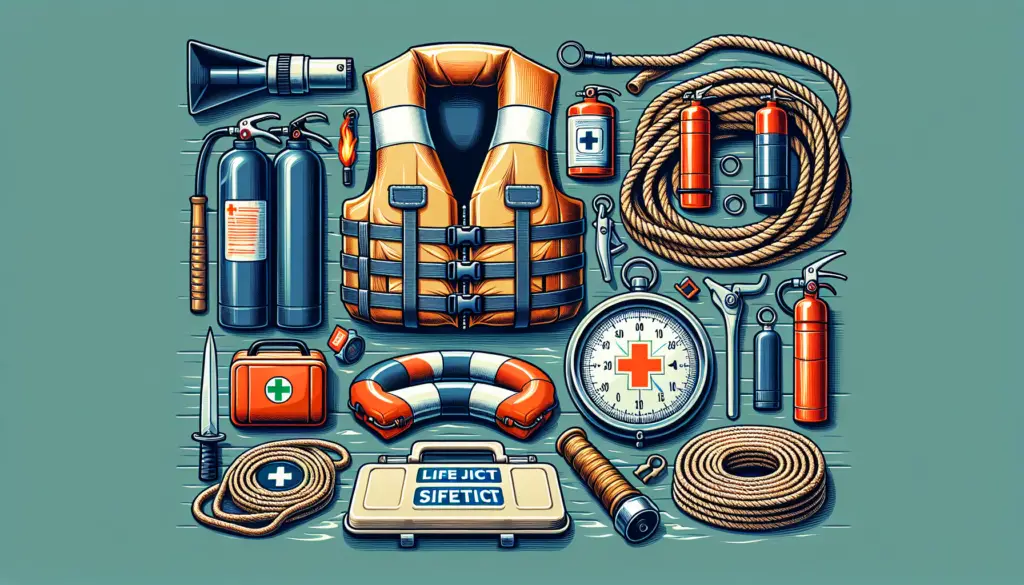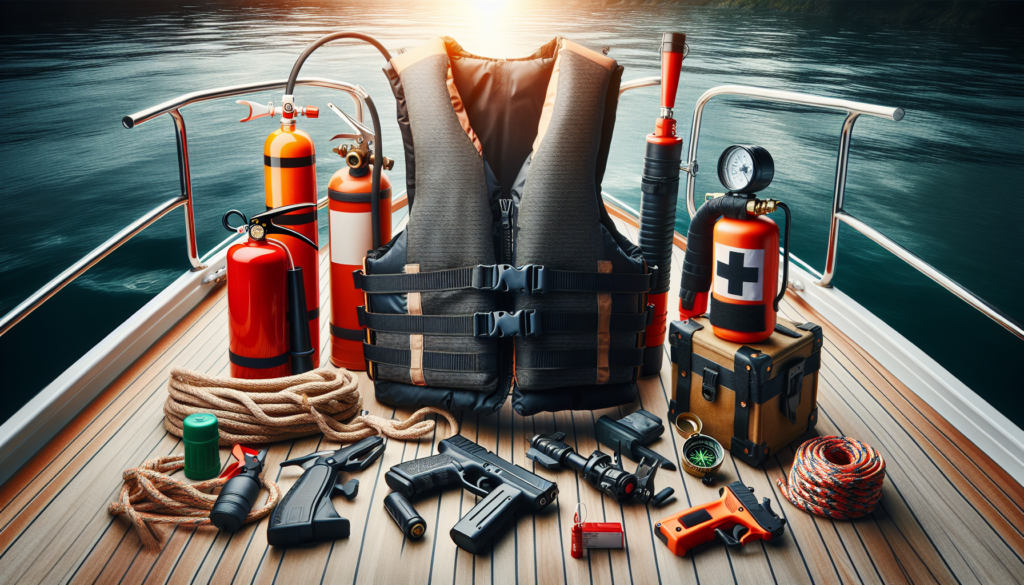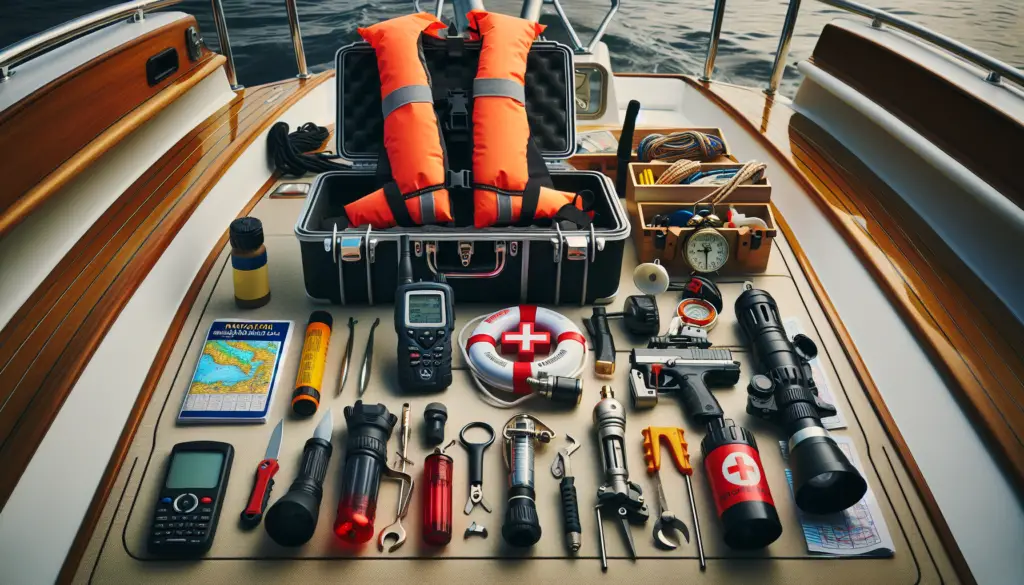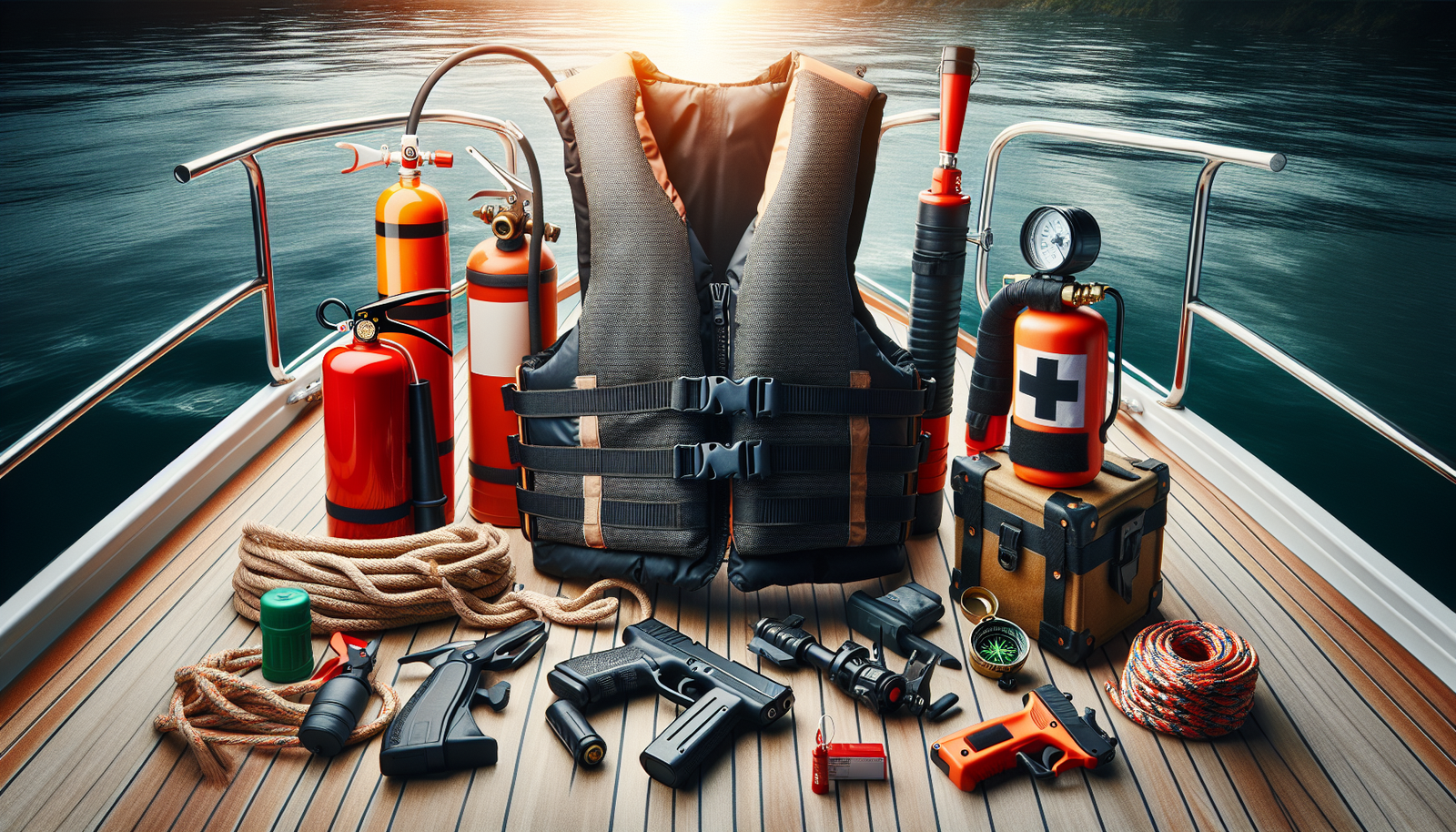Imagine yourself on the turquoise waves, feeling the salty spray on your skin, the sun warming your cheeks, and the gentle rocking rhythm of your boat. Yet, while the effortless appeal of the nautical realm sways your spirit, it’s crucial not to forget the underlying importance of well-prepared safety measures. Your article “Essential Safety Gear Every Boater Should Have” equips you with the knowledge to enjoy your maritime adventures with a confidence that can only come from full preparedness. As you navigate through the essentials listed, you’ll find yourself preparing for a journey that skillfully blends excitement with safe-guarded prudence.

Life Jackets
Life jackets, often called Personal Flotation Devices (PFDs), are essential and lifesaving pieces of safety gear for any mariner. Whether you’re sailing the serene lake or navigating the high seas, ensuring safety is paramount, and life jackets play a crucial role.
Types of Life Jackets
You’ve probably seen variations of life jackets. From off-shore life jackets that offer the highest buoyancy for choppy water and potentially long waits for rescue, to near shore buoyant vests suitable for navigating placid inland waters where rescue is imminent, your choices are diverse. There are also flotation aids and throwable devices, like ring buoys and horseshoe buoys, each designed for specific situations and water conditions.
How to Choose the Right Life Jacket
Choosing the right life jacket fortifies your safety on the waters. Key factors to consider include the type of water you’ll be navigating and the kind of boating you’ll be doing – calm, inland waters may call for a different choice than offshore excursions. Size and fit matter too; your life jacket should be snug but not overly tight—comfort is important as well.
The Importance of Having Enough Life Jackets for Every Passenger
While you may know how to tread water or swim, not all your passengers might. And even if they can, in turbulent conditions, stamina might run out quickly. For this reason and by law, you should have a life jacket for every passenger on board. Ensure they fit properly and everyone knows how to don them quickly under pressure.
Maintenance and Care for Life Jackets
Even the most robust life jacket requires care and maintenance. Regularly inspect your PFD for signs of wear, tear, or damage, ensuring the straps and buckles work, and the buoyant material isn’t compressed. Clean it as advised by the manufacturer and always stow it in a dry, ventilated place.
First Aid Kit
Prepare to handle minor injuries or health issues that might arise while boating by keeping a comprehensive first aid kit on board.
Items to Include in a Boating First Aid Kit
From bandages of numerous sizes and shapes, antiseptic wipes, tweezers, and a CPR mask to scissors, medical gloves, blister treatment, and a thermometer, the contents of your kit should be diverse. Don’t forget medication – both over-the-counter and any essential prescriptions for you or your usual boating companions.
How to Use Different First Aid Supplies
Having a well-stocked boating first aid kit is half the battle; you must also know how to use each item effectively. Whether it’s bandaging a wound, performing CPR, or remedying sea sickness, acquiring basic first aid knowledge and skills is important.
Storage and Accessibility of the First Aid Kit
The best first aid kit is the one that can be accessed quickly and easily. It should be stored in a waterproof and floatable container, be easily identifiable and be located somewhere accessible even in rough conditions.

Signal Flares and Visual Distress Signals
In times of distress, communicating your need for help is essential. Signal flares and visual distress signals facilitate this, even in difficult weather conditions.
Different Types of Flares and Signals
With aerial red flares, orange smoke signals, hand-held red flares and electronic signals, there are various types of distress signals to choose from, each with its own specific use case.
How to Use Signal Flares and Visual Distress Signals
Knowing when and how to set off your distress signal can mean the difference between efficient rescue and prolonged risk. Take the time to familiarize yourself with the firing mechanism, burn times and safety precautions of each flare type.
Legal Requirements for Carrying Signal Flares and Signals
Most boating jurisdictions require a specified number and type of distress signals to be carried on board. Regularly check your signals for expiration dates and replace them as required.
Fire Extinguisher
Fire extinguishers are crucial safety equipment for any boat, and can prevent a small, manageable fire from turning into a catastrophic event.
Types of Fire Extinguishers
With ABC fire extinguishers, which can put out most types of fires, plus CO2 extinguishers ideal for electrical fires, and foam extinguishers that combat liquid and solid material fires, you’ve got a variety of options to suit your onboard needs.
How to Use a Fire Extinguisher
Make sure all passengers know how this device works – remember the acronym PASS: Pull, Aim, Squeeze, and Sweep. Regular practice can make the difference when panic sets in.
Placement and Maintenance of Fire Extinguishers on a Boat
Fire extinguishers should be easily accessible, and signs should be posted to indicate their location. Regular checks for physical condition, pressure gauge status, and weight can help ensure they work when needed.

Emergency Position Indicating Radio Beacon (EPIRB)
An EPIRB is a potentially life-saving tool that sends out a distress signal to a worldwide network of satellites when activated.
What is an EPIRB?
It’s an essential piece of equipment for your ocean-going vessel that, when triggered, sends a mayday signal with your unique registration and GPS location to rescue coordination centers.
How to Use an EPIRB
In the unfortunate circumstance that you need to use it, ensure it’s activated correctly, typically by lifting or releasing an activation switch or sliding off the safety cover and pressing the button.
The Importance of Registering Your EPIRB
Registering your EPIRB isn’t just a regulatory requirement; it helps rescuers by providing them with crucial information like your vessel’s details, emergency contact information, and additional potentially life-saving data.
Personal Locator Beacon (PLB)
When exploring the waters solo or in remote regions, a PLB can be your direct line to rescue services.
What is a PLB?
A PLB is a handheld device that sends a personalized emergency signal with your location coordinates to search and rescue services worldwide.
Difference Between EPIRBs and PLBs
While the purpose of EPIRBs and PLBs is similar, their use cases differ. EPIRBs are specifically for maritime use and emit a signal for at least 48 hours, whereas PLBs, with a minimum of 24-hour transmission, are for personal use and can be used on land or sea.
How to Use a PLB
When in distress, turn on the device, deploy the antenna, and take care to ensure the beacon is facing the sky. Equally important is regular testing according to manufacturer instructions.

VHF Marine Radio
Strategically crafted for boating communication, VHF Marine Radios assist with distress calls, weather updates, and navigation information.
Features of a VHF Marine Radio
Some radios are equipped with features like a dedicated channel for distress signals, voice alert systems, waterproof bodies, GPS integration, and even noise cancellation for clearer communication.
How to Use a Marine Radio
Get acquainted with the basics of VHF communication etiquette, and learn phrases like “Mayday” for dire emergencies and “Pan Pan” for urgent but not immediately life-threatening situations.
Importance of Having a Marine Radio on Your Boat
A VHF Marine Radio is essential for receiving weather updates, communicating with coast guard or other boats, sending out a distress signal, or generally maintaining the safety and security of your vessel and crew.
Throwing Line
A throwing line is a rescue tool used to reach a person overboard and pull them back to safety.
What is a Throwing Line?
It’s a line, or rope, stored in a bag that you can throw to someone in the water while still maintaining your grip on one end.
How to Use a Throwing Line
To use this life-saving device, hold onto one end of the line, aim for the person in the water and toss the bag side-armed towards them.
Training and Care for Use of the Throwing Line
Regular practice is key for everyone on board to be confident of making that vital throw in an emergency. Check the condition of the line frequently and replace it if there’s any sign of wear or damage.
Boat Anchors
An anchor is used to secure a boat to the seabed, preventing it from drifting due to wind or current.
Types of Boat Anchors
Different anchors like the fluke anchor, plow style anchor, mushroom anchor, and more have different characteristics, making them better suited for specific ocean floors and conditions.
How to Choose and Use the Right Boat Anchor
Choosing the right anchor for your boat means you need to consider the type of seabed, wind conditions, and the size and weight of your boat. Using it involves lowering it from the bow (not the stern), taking care not to drop it onto the seabed but allowing it to gradually descend.
Safety Tips When Using Boat Anchors
Remember to use a length of chain (known as the “rode”) between your anchor and a boat, calculate the correct scope (the ratio of line length to the depth of the water), and make sure your anchor is securely stowed when not in use to prevent accidents.
Bilge Pump
A bilge pump helps to expel bilge water that may accrue within the boat.
What is a Bilge Pump?
Present at the lowest part of your boat’s hull, it’s used to pump out unwanted water, helping to keep your boat afloat and your decks clean and dry.
How to Use and Maintain a Bilge Pump
Manual or automatic, knowing how your bilge pump operates can be important in keeping your boat dry and seaworthy. Regular exams for blockage, power supply, and functionality can go a long way in maintaining it.
Choosing the Right Bilge Pump for Your Boat
Selecting the right bilge pump involves considering your boat’s size, the volume of water your boat may take on, and the pump’s flow rate, ensuring it is adequate for your needs.
In a nutshell, knowledge and functional marine safety equipment are your best allies when setting out for a boat ride. Your adventurous spirit, backed by safety precautions and preparations, can make each boating experience memorable and safe.

